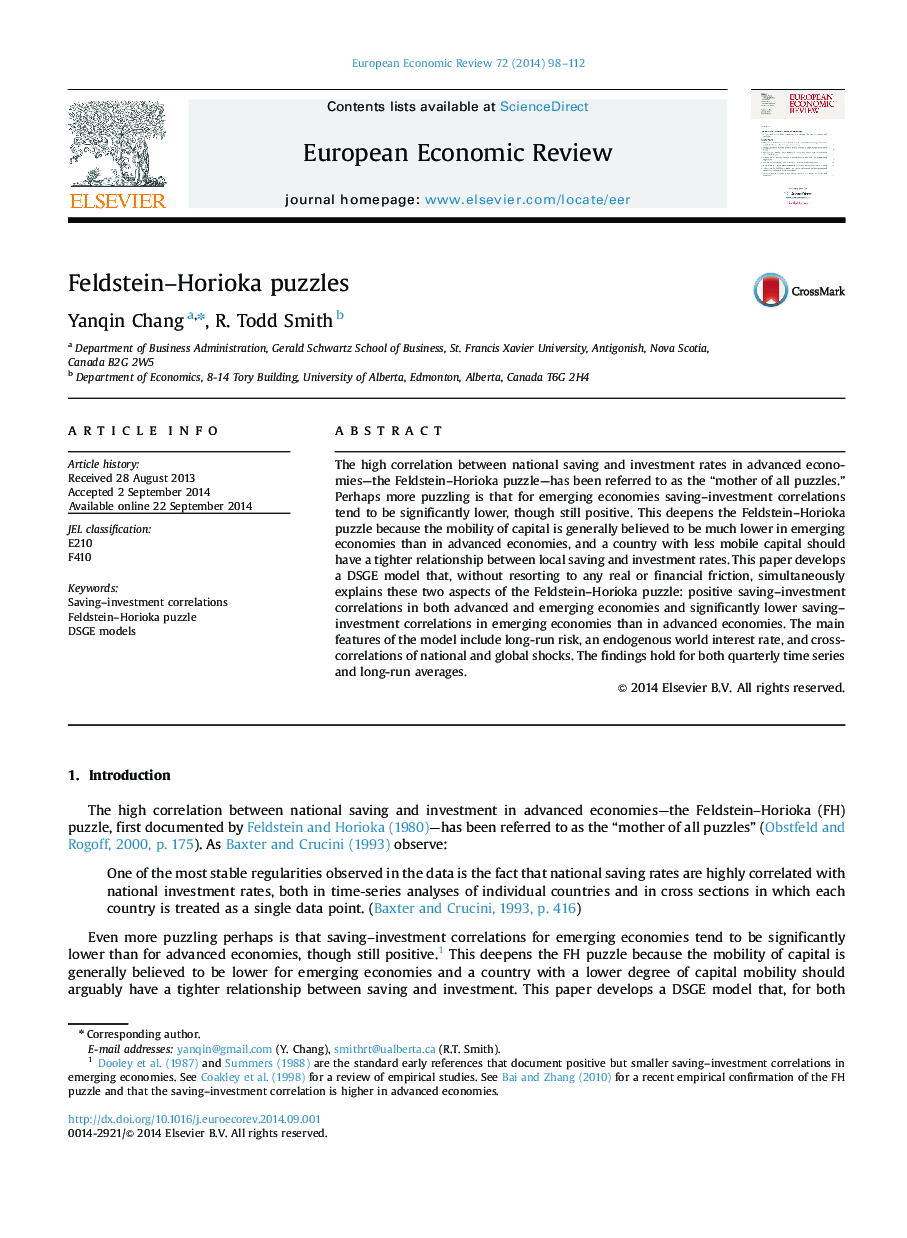| Article ID | Journal | Published Year | Pages | File Type |
|---|---|---|---|---|
| 5066753 | European Economic Review | 2014 | 15 Pages |
â¢Explain low (high) saving-investment correlation in emerging (advanced) economies.â¢Jointly explain these two puzzles using a DSGE model.â¢Model features long-run risk, endogenous world interest rate, national and global shocks.â¢Findings hold in quarterly data and long-run averages for saving and investment.
The high correlation between national saving and investment rates in advanced economies-the Feldstein-Horioka puzzle-has been referred to as the “mother of all puzzles.” Perhaps more puzzling is that for emerging economies saving-investment correlations tend to be significantly lower, though still positive. This deepens the Feldstein-Horioka puzzle because the mobility of capital is generally believed to be much lower in emerging economies than in advanced economies, and a country with less mobile capital should have a tighter relationship between local saving and investment rates. This paper develops a DSGE model that, without resorting to any real or financial friction, simultaneously explains these two aspects of the Feldstein-Horioka puzzle: positive saving-investment correlations in both advanced and emerging economies and significantly lower saving-investment correlations in emerging economies than in advanced economies. The main features of the model include long-run risk, an endogenous world interest rate, and cross-correlations of national and global shocks. The findings hold for both quarterly time series and long-run averages.
